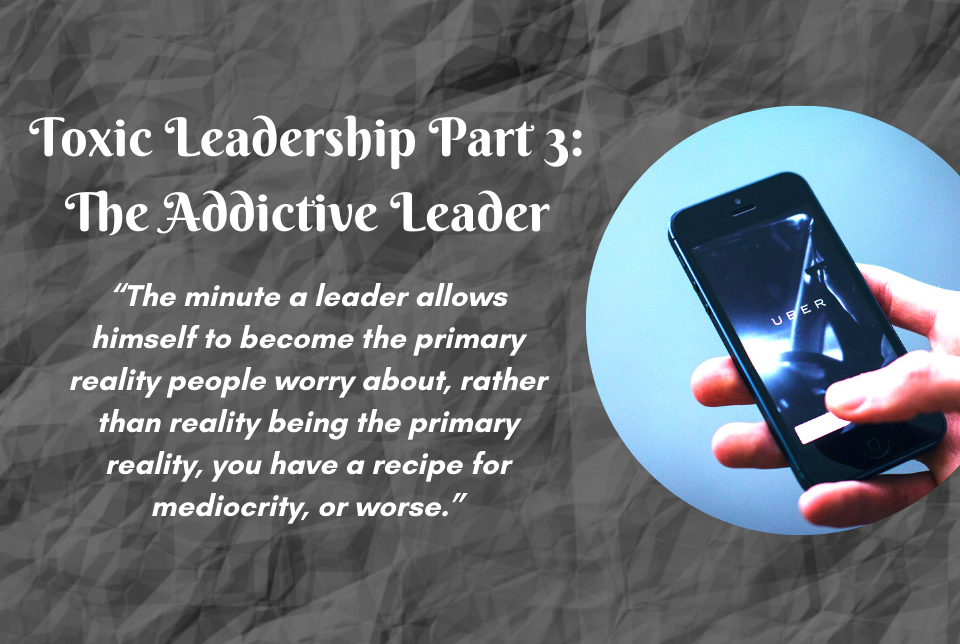Misconception #2: Servant Leadership Is (or appears to be) Weak
This is the 3rd in a series on the topic of Misconceptions and Objections to Servant Leadership. Why, after all these years, is servant leadership not more practiced? Why is this powerful approach so easily dismissed as being irrelevant or impractical to day to day organizational life? This series explores the common misconceptions that often result in leaders ignoring a way of leading that can bring their organizations greater health and higher performance.
Misconception #2: Servant Leadership Is (or appears to be) Weak
What are leaders expected to do? Most would state firmly that leaders must get results. They should mobilize their followers to maximal effectiveness to fulfill their mission; to get things done; to move the organization or team forward toward success. Along the way, the leader is expected to make multiple hard decisions, to say no to followers, to hold them accountable for performance and constantly drive the team forward. All of this speaks to expectations of strength, commitment and yes, the power of the leader. Leaders must use power to get things done and no leader wants to be considered weak or ineffective.
Enter, Servant Leadership. The name itself can be troubling (we will address that in a future article) but the sense that this approach to leading is weak, or even appears to be weak is enough to cause most leaders to dismiss it out of hand. And, if servant leadership is weak then it should be dismissed. However, is this an accurate portrayal of what servant leadership really is? Might it be that servant leadership, instead of being weak and powerless, actually calls on a dramatic and effective use of power by the leader that is anything but weak? Let’s explore this critical question further.
Lussier and Achua (2001) write that “servant leadership calls for the highest level of selflessness—a level some doubt exists in the real world. The leader completely assumes the role of follower at the lowest rung of the ladder and serves others in the accomplishment of organizational goals.” I hope we can agree that this statement does NOT represent what servant leadership is all about. Servant leaders, if they have been entrusted with a position to lead within an organization, are expected to use their power and authority to get results. Though they certainly may take on the role of following at strategic times, in no way should we characterize the role of servant leaders as “assuming the role of follower at the lowest rung of the ladder”. This kind of language perpetuates the misconception of the weakness of the servant leader … and it is a misconception.
Let’s look at the term itself – servant leader. Both words are essential. The servant leader serves. The servant leader leads. Both functions are necessary for understanding this amazing leadership concept. Though servant leaders focus first on their followers encouraging and assisting them to become leaders and servants themselves, servant leaders also lead. They move people toward a vision for change, they hold others accountable, and they speak the truth even if that truth hurts. Part of the problem here is that we have come to equate servant leadership with niceness. The thinking goes, if I am nice to everyone and keep them happy (an impossible task to be sure) then I am a good servant leader. Not so.
One of the six key characteristics of the servant leader from the OLA model is Displays Authenticity. The servant leader is honest, open, transparent and truthful. This means that as the servant leader leads, he or she must speak the bold and sometimes difficult truth to their followers. This is not about being nice, it is about serving others so that they become true partners in the work of leadership. Think about it. Servant leaders actually demand more from their followers. They go beyond mere transactional expectations (do your basic job and I’ll give you basic pay). They also go beyond a transformational approach where the leader inspires and empowers followers to perform beyond expectations.
Servant leaders expect followers to lead and become partners in moving the team forward. Servant leaders resist the tendency to take the role of the kindly father or mother-like leader, only nurturing and taking care of the followers. Servant leadership is not paternalism. Servant leaders serve with the expectation that followers engage actively in the leadership process and through this increase performance and leadership capacity.
OK – it is nice to be nice. I won’t argue that. But we do servant leadership a disservice when we characterize it in ways that seem weak and ineffective. Servant leaders have and use power, but they use this power to build their workers toward fulfilling their incredible potential. This leads to more satisfied workers, and followers who step up to leadership. Nothing weak or ineffective in that.
Your fellow servant,
Jim





